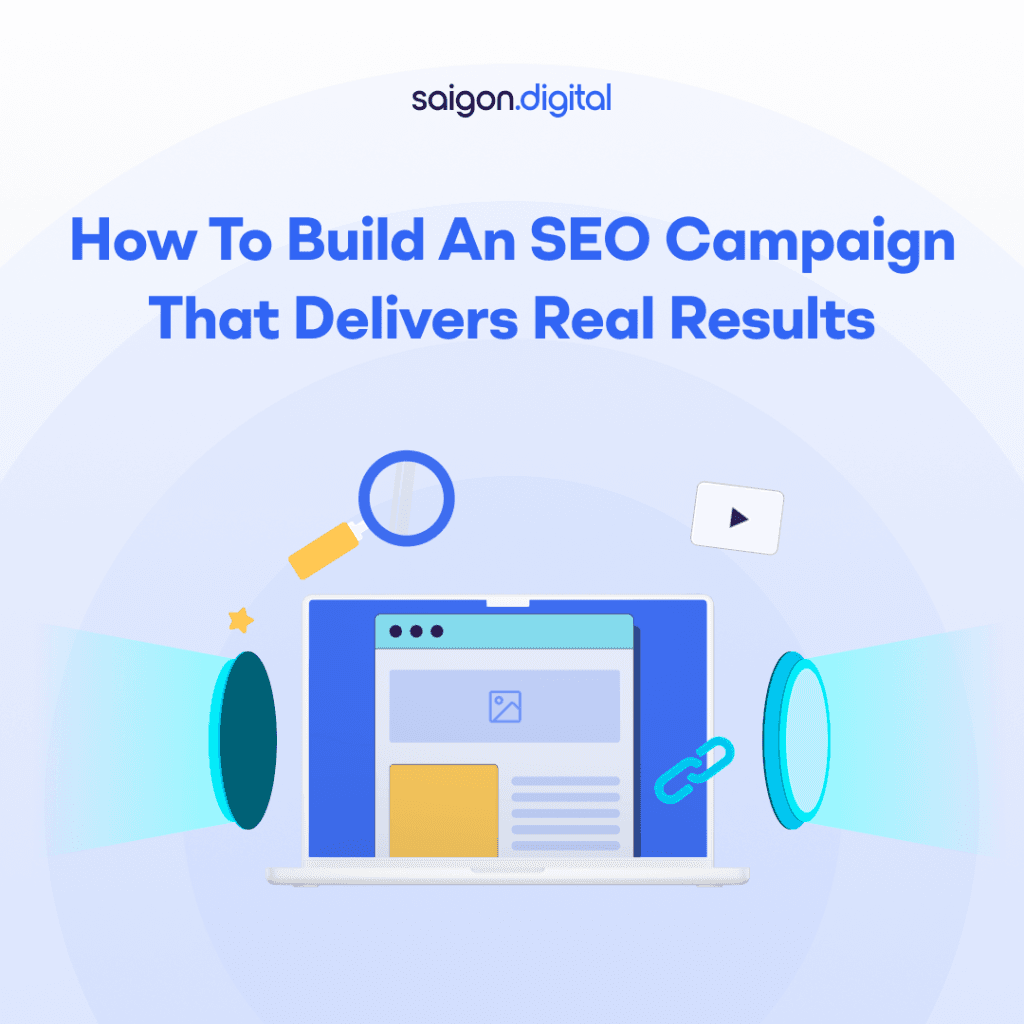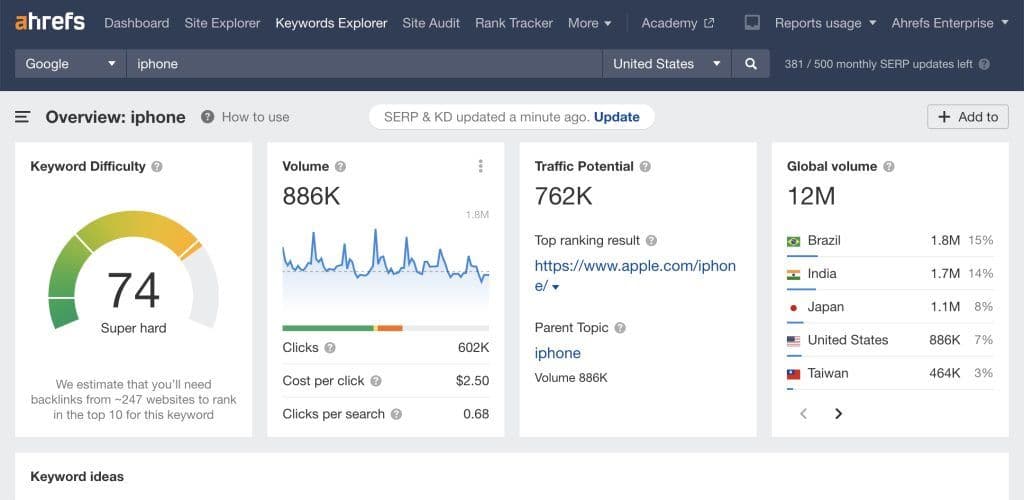
What Is an SEO Campaign?
An SEO campaign is a structured, strategic effort to improve a website's visibility in search engine results pages (SERPs). It involves a series of coordinated tasks, such as keyword research, on-page optimisation, content creation, technical auditing, and link building, all geared towards increasing organic traffic and achieving long-term growth. Unlike one-off SEO tasks, a campaign is ongoing and data-driven. It requires consistent effort, regular monitoring, and flexibility to adapt as algorithms and market conditions change.Step 1: Define Your Campaign Goals
The first step in building any successful SEO campaign is clarity. What are you trying to achieve? Are you looking to:- Increase organic traffic?
- Improve local visibility?
- Generate more leads or sales?
- Enhance brand awareness?

Step 2: Conduct Comprehensive Keyword Research
Keyword research remains the cornerstone of any effective SEO campaign. It's not just about finding high-volume terms, it’s about identifying the search intent behind those queries. Start by:Brainstorming Topics Relevant to Your Business
Begin your keyword research by brainstorming topics that are closely aligned with your business, industry, and audience interests. Think about the core services or products you offer, common client questions, and pain points your solutions address. This exercise helps you uncover initial themes or categories that your audience may be searching for, providing a strong starting point for further exploration.Using Tools like Google Keyword Planner, Ahrefs, or SEMrush
Once you have a list of topics, it’s time to use keyword research tools to validate and expand your ideas. SEO tools like Google Keyword Planner, Ahrefs, SEMrush, or Ubersuggest can reveal search volume, keyword difficulty, and related terms. These tools help you understand the demand behind each keyword and identify opportunities where competition may be lower. They’re also valuable for discovering variations, trends, and long-tail keywords that you might not have considered initially.Analysing Competitors’ Keyword Strategies
Another effective SEO strategy is to analyse the keyword performance of your top competitors. By reviewing which terms they rank for, you can uncover content gaps or missed opportunities in your own strategy. Tools like Ahrefs or SEMrush allow you to plug in a competitor’s domain and extract a list of high-performing keywords. This doesn’t mean copying them directly, but rather using their performance as insight into what works within your industry or niche.
Considering Long-Tail Keywords That Are More Specific and Often Less Competitive
While broad, high-volume keywords may seem attractive, they’re often highly competitive and can lack clear intent. Long-tail keywords (phrases that are more specific and usually longer) tend to have lower search volume but higher conversion potential. These terms indicate that the user is further along in their journey and more likely to take action. Incorporating long-tail keywords into your strategy allows you to target niche audiences and build authority in specific subject areas with greater ease. Once you have a refined list, categorise your keywords based on user search intent : informational, navigational, transactional, and commercial investigation. This helps you tailor your content strategy accordingly.Step 3: Audit Your Website
Before pushing forward, it’s important to understand where your site currently stands. A full technical and on-page SEO audit will reveal the strengths and weaknesses of your current setup. Key areas to audit include:Page Speed and Mobile Responsiveness
Page speed and mobile responsiveness are critical factors for both user experience and search engine rankings. A slow-loading website can lead to high bounce rates and lower conversions, especially on mobile devices where users expect instant results. Use tools like Google PageSpeed Insights or GTmetrix to evaluate your load times and identify bottlenecks. Ensuring your website is fully responsive will not only please your visitors but also meet Google’s mobile-first indexing requirements.Indexation and Crawlability
If search engines can’t find or properly index your pages, they simply won’t appear in search results. Use Google Search Console to check which pages are being indexed and identify any crawl errors or exclusions. Ensure that your robots.txt file and sitemap are properly configured, and that key pages aren’t being accidentally blocked. Improving crawlability ensures your content is accessible to search engines, enabling them to understand and rank it effectively.URL Structure and Internal Linking
A clean, logical URL structure makes it easier for both users and search engines to navigate your site. URLs should be short, descriptive, and include relevant keywords where appropriate. Internal linking helps distribute authority, guides users to related content, and enhances crawl efficiency. A thoughtful internal linking strategy not only boosts SEO performance but also improves site usability.Meta Tags (Titles, Descriptions)
Meta titles and descriptions are vital on-page elements that influence how your pages appear in search results. A well-optimised title tag includes your target keyword and entices users to click. Meta descriptions should provide a concise summary of the page content while encouraging engagement. As part of your audit, check for missing, duplicate, or poorly written meta tags and update them to better reflect user intent and SEO best practices.Duplicate Content Issues
Duplicate content can confuse search engines and dilute ranking potential. Run your website through tools like Siteliner or Copyscape to identify duplicate pages or blocks of text. Where necessary, consolidate content, use canonical tags, or rewrite material to ensure each page offers unique value. Addressing duplication issues strengthens your site’s authority and clarity in the eyes of search engines.Schema Markup
Schema markup , or structured data, helps search engines better understand the content on your pages and can enhance your listings with rich snippets (e.g., reviews, FAQs, event details). Implementing schema types relevant to your business, such as product, article, or organisation schema, can improve visibility and click-through rates. Use Google’s Rich Results Test to verify your structured data and ensure it’s correctly formatted and error-free.
Broken Links
Broken links not only disrupt the user journey but can also harm your SEO performance. Regularly scan your website for dead internal and external links using tools like Screaming Frog or Ahrefs. Fix or remove any broken links to maintain site integrity and provide a smoother user experience. This seemingly minor task can significantly improve your site’s credibility and crawlability.Step 4: Optimise On-Page Elements
Once your audit is complete, you can start optimising key pages based on your keyword research. You should focus on:Title Tags and Meta Descriptions
Title tags and meta descriptions are often the first interaction a user has with your site in the search results, so they need to be clear, relevant, and engaging. A strong title tag should include your target keyword naturally, ideally near the beginning, and stay within Google’s character limit (usually around 60 characters). Your meta description should expand on the title with a persuasive summary of the page content, think of it as an advert for your page. While it doesn’t directly impact rankings, a well-crafted meta can significantly boost your click-through rate.Content Headers (H1, H2, H3)
Using header tags properly helps structure your content in a way that is both readable and SEO-friendly. Your main page title should be wrapped in an H1 tag, with subheadings marked using H2, H3, and so on. This hierarchy allows search engines to better understand the content and context of each section. It also improves user experience by breaking down large chunks of text into digestible sections, making the content easier to scan and engage with.Internal Linking
Internal links play a crucial role in distributing page authority across your website and keeping users engaged. By linking to related pages, such as services, blog posts, or resource pages, you guide visitors through your site logically, helping them discover more relevant content. From an SEO perspective, internal linking helps search engines crawl and index your pages more efficiently while signalling which content is most important. Use descriptive anchor text and ensure links feel natural within the content.Optimising Images (File Names, Alt Text)
Images enhance content visually, but they also present valuable SEO opportunities. Rename image files with descriptive, keyword-rich terms before uploading (e.g., “seo-campaign-graphic.jpg” instead of “IMG_1234.jpg”). Adding alt text not only improves accessibility for users with screen readers but also provides additional context for search engines. Optimised images can contribute to image search rankings and improve page load speed when properly compressed and formatted.Mobile-Friendly Content
With mobile usage now dominating web traffic, it’s essential that your content is fully responsive and easy to navigate on all devices. Test your pages on different screen sizes to check for layout issues, tap target sizing, and readability. Additionally, ensure your content is accessible to all users, including those with disabilities. Use clear fonts, proper contrast, and semantic HTML to support assistive technologies. A mobile-friendly, accessible site is not only user-centric. Don’t just optimise for search engines but instead optimise for people. User experience (UX) plays a critical role in SEO, particularly with Google’s growing emphasis on helpful content and core web vitals.Step 5: Create Valuable Content
Content is at the heart of a high-performing SEO campaign. But creating content for the sake of ranking simply isn’t enough anymore. To stand out, you should try to:Answer Real User Questions
Creating content that answers actual user questions is one of the most effective ways to build relevance and trust. Use tools like AnswerThePublic, Google’s “People also ask” feature, and forums such as Quora or Reddit to discover what your audience is genuinely curious about. Structuring content around these questions not only provides value to readers but also increases your chances of earning featured snippets in search results. By being helpful and direct, you position your site as an authoritative resource.Provide Unique Insights or Perspectives
In a saturated digital landscape, regurgitating what’s already out there won’t move the needle. Instead, offer fresh perspectives, original research, case studies, or expert commentary that sets your content apart. Think about what your brand, team, or experience can uniquely contribute to a topic. This kind of originality not only helps with SEO but also builds your brand’s credibility and thought leadership over time.Update Outdated or Thin Content
Content that is old, inaccurate, or lacks depth can harm both user trust and search visibility. Regularly audit your existing content and update it with current statistics, relevant insights, and improved formatting. Thin pages should either be expanded or merged with related content to provide a richer experience. Keeping your content fresh shows search engines (and users) that your website is maintained and up-to-date.Use Multimedia to Enhance Engagement (Images, Videos, Infographics)
Text alone can only go so far. Adding multimedia elements like images, videos, charts, and infographics can dramatically improve user engagement and retention. These formats break up long blocks of text, illustrate complex ideas more clearly, and make your pages more visually appealing. Multimedia also increases the chances of your content being shared, embedded, or linked to, boosting your reach and SEO performance at the same time.Format Content for Readability
Good content isn't just about what you say, but how you present it. Break up text with short paragraphs, bullet points, and subheadings to make it easy to scan. Use clear, concise language and avoid jargon unless it’s necessary for your audience. Incorporate white space strategically and use typography that’s comfortable to read. Readability is a direct contributor to user satisfaction, which in turn influences dwell time, bounce rates, and your site’s overall performance in search engines.Develop a Content Calendar to Publish Regularly
Consistency is key in any SEO campaign. A content calendar helps you plan, organise, and publish content in a structured manner. This ensures a steady flow of fresh material, keeps your site active in the eyes of search engines, and supports broader marketing initiatives like product launches or seasonal campaigns. Your content should serve a purpose, whether it’s to inform, educate, or convert. A well-crafted blog post or service page can act as both a traffic magnet and a lead generator. Consistency is key. Develop a content calendar to publish regularly and cover topics across all stages of the buyer journey.Step 6: Earn High-Quality Backlinks
Backlinks remain a crucial ranking factor. However, quality trumps quantity. A few authoritative links from reputable sources are far more valuable than dozens of low-quality ones. Strategies include:Guest Posting on Industry-Related Sites
Guest posting remains a trusted method for earning high-quality backlinks and establishing authority in your field. By contributing valuable content to reputable websites within your industry, you can gain exposure to new audiences while earning a contextual backlink to your own site. When done correctly, this strategy benefits both parties, you provide the host site with quality content, and in return, you build your site’s authority and reach. Be selective with where you contribute, ensuring the platform is credible, relevant, and aligned with your brand.Creating Shareable Assets (e.g., Research Reports, Infographics)
Content that is insightful, visually engaging, or data-driven is far more likely to be shared and linked to by others. Consider developing original research, in-depth guides, infographics, or interactive tools that provide clear value to your audience. These shareable assets not only enhance your brand’s perceived expertise but also naturally attract backlinks from blogs, news outlets, and industry-specific websites. The more useful and unique your asset, the more likely others will reference and promote it organically.Engaging in Digital PR Campaigns
Digital PR blends traditional public relations tactics with SEO strategy. By crafting newsworthy stories, such as company milestones, industry commentary, or unique insights, and pitching them to online journalists or bloggers, you can secure earned media coverage and authoritative backlinks. A well-timed PR campaign can dramatically boost your site’s visibility, especially if it’s picked up by high-authority publications. It’s a strategic way to elevate brand awareness while supporting long-term SEO growth.Reaching Out for Broken Link Opportunities
Broken link building involves identifying links on other websites that point to outdated or non-existent pages, then suggesting your own content as a suitable replacement. Website owners appreciate the gesture, as it helps improve their user experience, and you benefit by gaining a relevant backlink. Tools like Ahrefs or Broken Link Checker can help you locate these opportunities. Focus on sites that are related to your niche and ensure your replacement content genuinely adds value.Avoid Spammy Tactics Like Buying Links or Participating in Link Schemes
It’s essential to approach link building ethically. Buying backlinks or participating in manipulative schemes may offer short-term gains, but they risk long-term penalties from search engines. Google’s algorithms are sophisticated enough to detect unnatural linking patterns, and penalised sites can experience severe drops in rankings or even removal from the index. Instead, invest your time in sustainable, white-hat link-building practices that genuinely improve your authority and online reputation. Avoid spammy tactics like buying links or participating in link schemes, these can do more harm than good.Step 7: Monitor Performance & Iterate
No SEO campaign is complete without measurement and iteration. Use tools like Google Analytics, Google Search Console, and third-party platforms to track key metrics such as:- Organic traffic
- Keyword rankings
- Click-through rates (CTR)
- Bounce rates
- Conversions and goal completions





